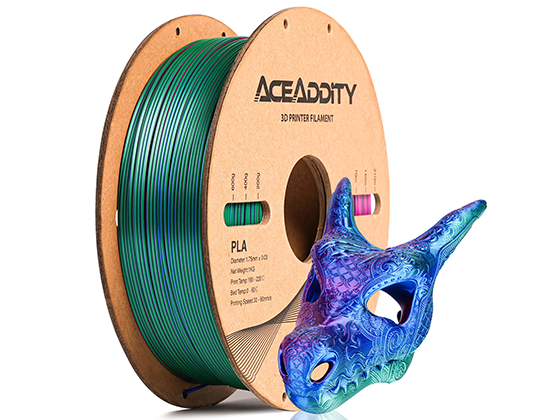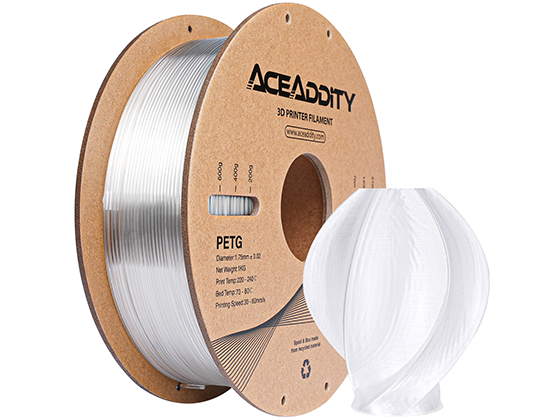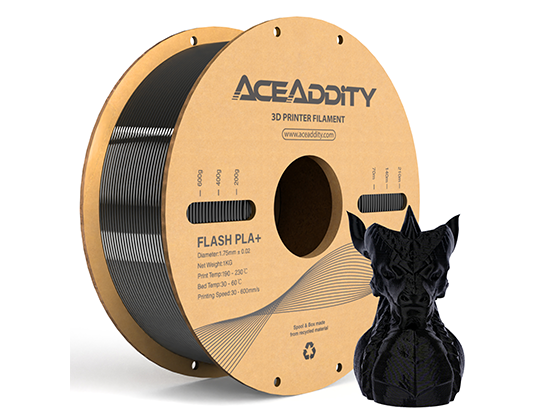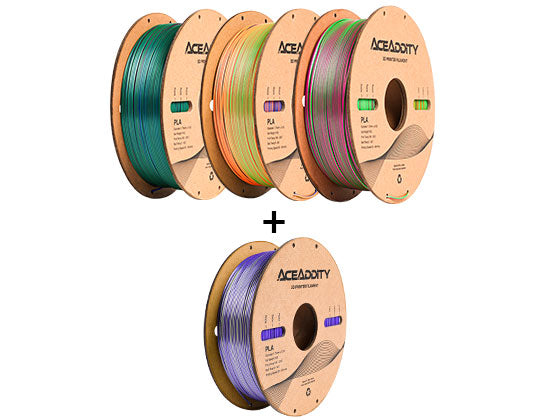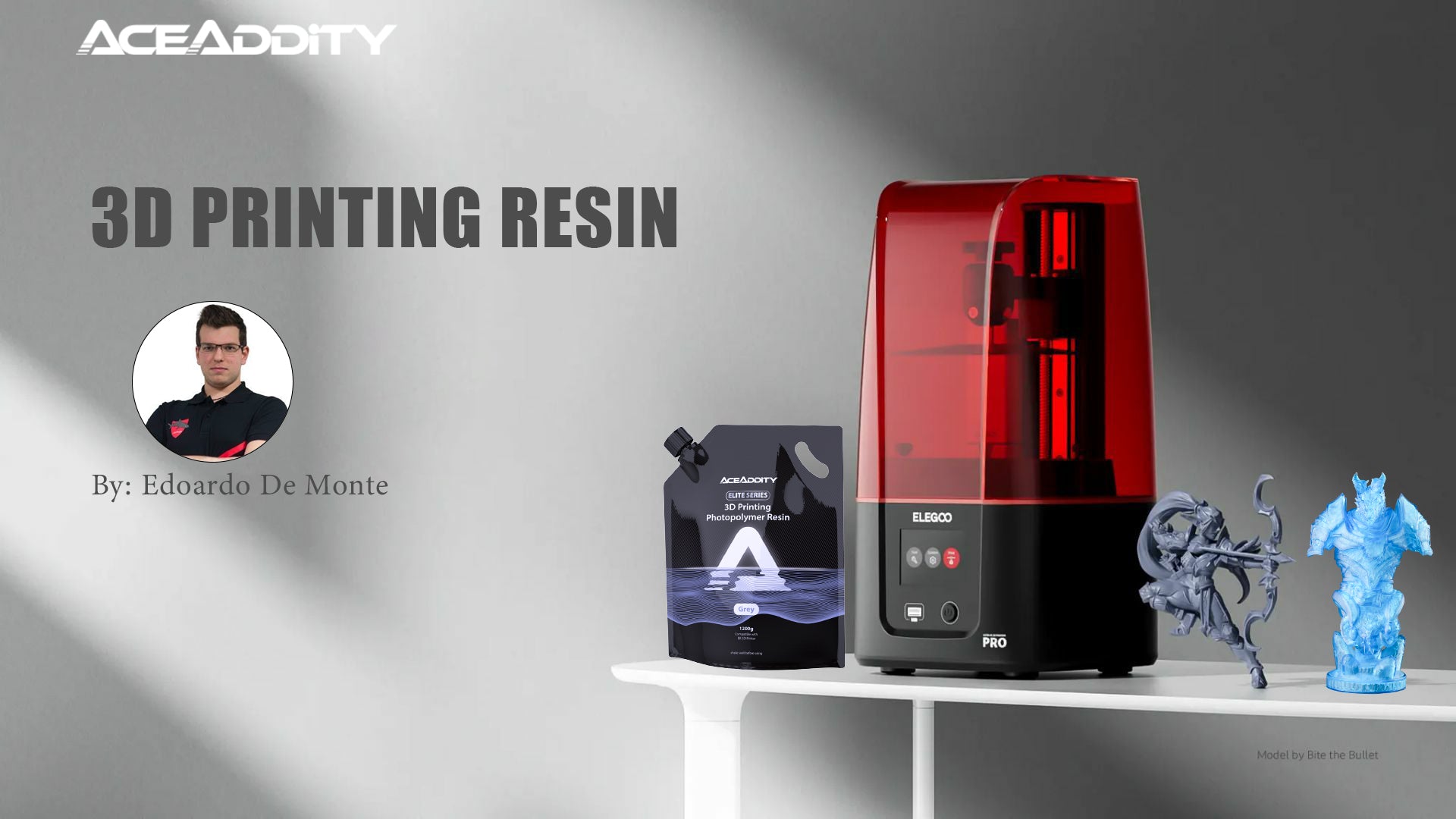Aceaddity developed the Elite resin keeping in mind the users’ needs, successfully balancing different key aspects. From the tests and the prints I did, the result is a very good resin that doesn’t sacrifice performances and safety for the user and the machine. Let’s take a look at the features that this resin offers and that you should always look for to have a material that is capable to perform the best in terms of printing quality and machine durability.
- Safety: this is a key aspect that can’t be neglected. If the best resin in the market is harmful for the users, that mustn’t be used. Liquid resin is always harmful if ingested and can cause skin reaction if touched with the bare skin, so we always need gloves and goggles to protect us.
However, another very underestimated problem is the formation of toxic fumes during the printing process because the temperature raises to the point it can cause the resin to produce harmful fumes. Aceaddity Elite resin was developed to limit this temperature to 60-80 °C, both avoiding the production of toxic fumes and heating less the LCD screen. This prevents the risk for human safety and prolongs the life of the LCD screen, slowing the machine aging.
Moreover, Aceaddity doesn’t use any harmful additive or substance to enhance specific properties (for example fluorescent brighteners aren’t used to improve the ability to show better the details).
- Low curing time: a low curing time means that the curing process is faster. This is useful for professionals who have to print a lot of parts.
- Fluidity: good fluidity means that the liquid resin can be easily squeezed out when the plate is moving down, thus providing less pressure on the screen increasing its lifespan and creating less force on the electric motor of the Z-axis. Moreover, the force when the print is separated from the FEP film will be lower than using a viscous resin, making it possible to reach high printing speed and lowering a lot the wear of the FEP film.
A fluid resin will also drip from the print, while a viscous resin will remain attached to the printed object while hanging from the plate and so more resin will be wasted in the cleaning process. In the following images you can clearly see the difference between the Aceaddity Elite grey resin (light grey one on the left) and another more viscous resin (dark one on the right) in terms of liquid residue on the printed miniatures.
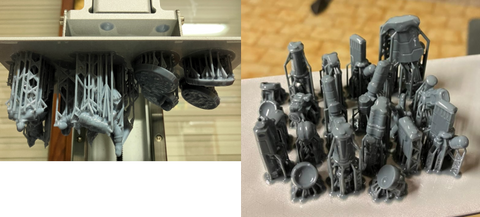
- High pigmentation: pigments are responsible for the portion of light absorbed, scattered and transmitted by the resin. Having a resin that doesn’t look transparent on thin parts means that it will hold better the details thanks to a higher pigmentation. It also affects the cross-layering curing and light bleed, that are greatly mitigated and controlled by Aceaddity without compromising the bonding of the layers. In the following images you can see the differences in terms of cross-layer curing between Aceaddity Elite resin (grey one) and a low-quality resin (black one). You can notice that the coins on the bottom part of the golem (which was facing the build-plate and so was subjected to cross-layer curing) are printed a lot better with Aceaddity resin.


- Stability: dimensional stability means that the resin won’t deform a lot after the curing process. All materials shrink when solidified, but we want it minimum and to be uniform to avoid warping. Elite resin has minimum and uniform shrinkage, creating near-perfect joints that don’t need to be filled and cleaned if you’re assembling a very big statue or creating a functional part.
Long-term stability means that the printed objects won’t break spontaneously after a long time and that the liquid resin will last a long time before expiring. This means that Aceaddity Elite resin qualities permit a long-time storage without losing success rate.
Then there is the stability during the process. This resin performed very well because, once I found the correct printing parameters, I didn’t have any failure. Moreover, the resin is very flexible and strong during the process: the supports’ structure is well-adhered to the print allowing to use very fine tips (I use 0.2 to 0.3 mm contact point) for an easy removal once the print is finished.

- Good mechanical properties: a strong resin is a resin that can withstand high forces and Aceaddity Elite is a quite strong resin which is suitable both for functional parts and art pieces.
As regards flexibility, it depends a lot on the post-curing time once the prints are cleaned. Aceaddity resin is not formulated to be as flexible as ABS-like resin or similar after a long curing time, but the resin is very flexible if cured for just 30-60 s in a UV chamber. If you want this resin to be flexible, just cure it for a very small amount of time after the cleaning process: your miniatures will be flexible enough to play with them and the surface will be hard cured enough to be painted. To avoid it becoming more brittle due to the exposure to the sunlight, paint them with a dark primer and it will prevent the curing from the sunlight if you won’t paint them for a long time.
As regards hardness, this also depends on the post-curing time. Using a post-curing time of 4 minutes makes the resin hard enough to feel like the famous green-stuff or other sculpting materials. I tell you this because it is perfect to be sanded and cleaned from the support marks: using a 600 sandpaper will leave the surface perfect thanks to the resin hardness and you’ll also be able to create realistic scratches or battle damage to your miniatures.


